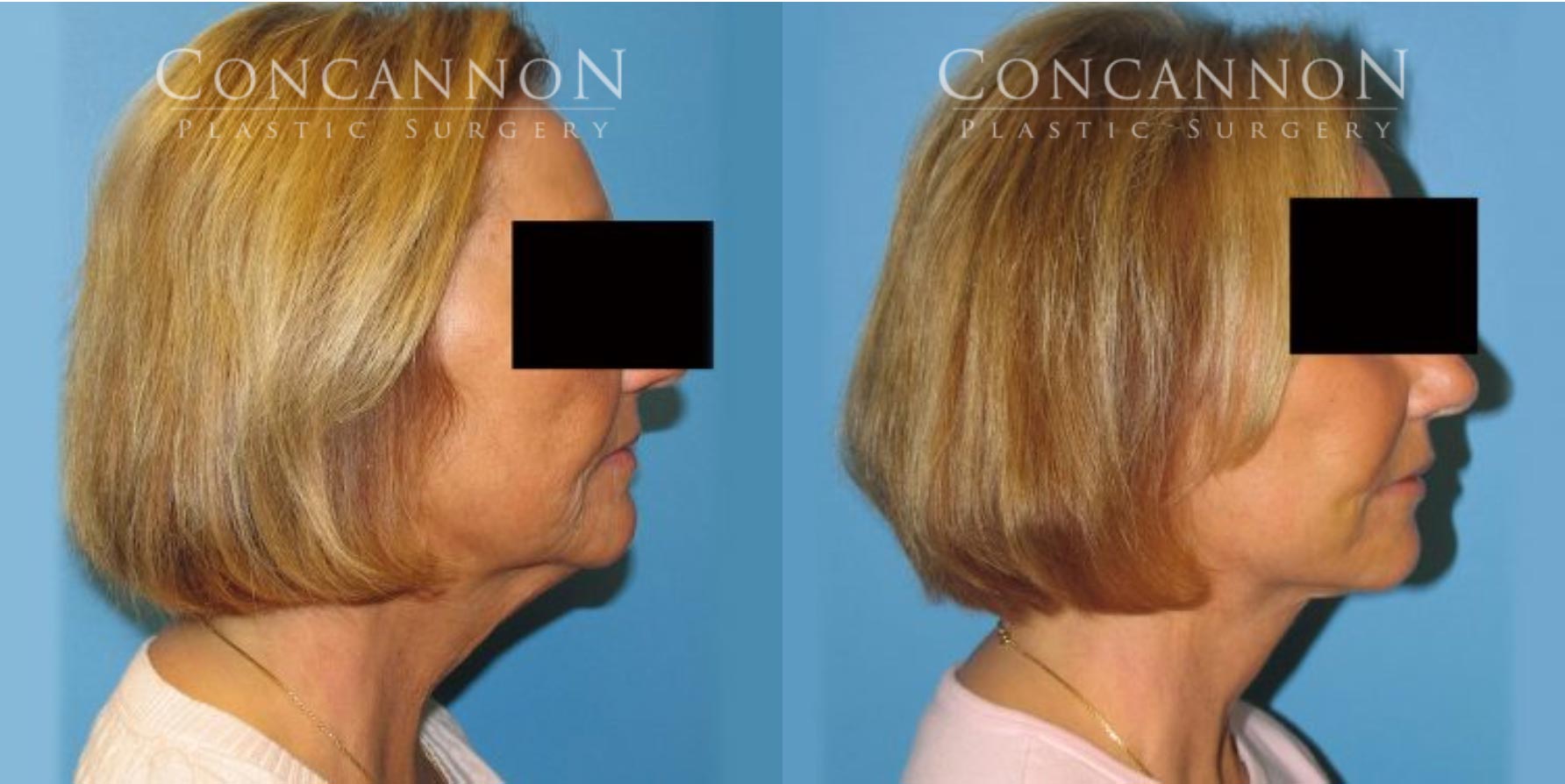Facelift
IF YOU'RE CONSIDERING A FACELIFT
As people age, the effects of gravity, exposure to the sun, and the stresses of daily life can be seen in their faces. Deep creases form between the nose and mouth; the jawline grows slack and jowly; folds and fat deposits appear around the neck.

General Information
A facelift (technically known as rhytidectomy) can’t stop this aging process. What it can do is “set back the clock,” improving the most visible signs of aging by removing excess fat, tightening underlying muscles, and redraping the skin of your face and neck. A facelift can be done alone, or in conjunction with other procedures such as a forehead lift, eyelid surgery, or nose reshaping.
If you’re considering a facelift, this information will give you a basic understanding of the procedure: when it can help, how it’s performed, and what results you can expect. It can’t answer all of your questions, since a lot depends on the individual patient. Please ask Dr. Concannon about anything you don’t understand.

The best candidates for a facelift
The best candidate for a facelift is a man or woman whose face and neck have begun to sag, but whose skin still has some elasticity and whose bone structure is strong and well-defined. Most patients are in their forties to sixties, but facelifts can be done successfully on people in their seventies or eighties as well.
A facelift can make you look younger and fresher, and it may enhance your self-confidence in the process. But it can’t give you a totally different look, nor can it restore the health and vitality of your youth. Before you decide to have surgery, think carefully about your expectations and discuss them with your surgeon.
All surgery carries some uncertainty and risk
When a facelift is performed by a qualified plastic surgeon, complications are infrequent and usually minor. Still, individuals vary greatly in their anatomy, their physical reactions, and their healing abilities, and the outcome is never completely predictable.
Complications that can occur include hematoma (a collection of blood under the skin that must be removed by the surgeon), injury to the nerves that control facial muscles (usually temporary), infection, and reactions to the anesthesia. Poor healing of the skin is most likely to affect smokers.
You can reduce your risks by closely following your surgeon’s advice both before and after surgery.
Planning your surgery
Facelifts are very individualized procedures. In your initial consultation Dr. Concannon will evaluate your face, including the skin and underlying bone, and discuss your goals for the surgery.
Dr. Concannon will check for medical conditions that could cause problems during or after surgery, such as uncontrolled high blood pressure, blood clotting problems, or the tendency to form excessive scars. Be sure to mention if you smoke or are taking any drugs or medications, especially aspirin or other drugs that affect clotting. Smoking greatly increases the risks of surgery: Dr. Concannon will not perform this operation on a smoker for this reason.
If you decide to have a facelift, Dr. Concannon will explain the techniques and anesthesia he will use, the type of facility where the surgery will be performed, and the risks and costs involved. Don’t hesitate to ask any questions you may have, especially those regarding your expectations and concerns about the results.
Preparing for your surgery
Dr. Concannon will give you specific instructions on how to prepare for surgery, including guidelines on eating and drinking, and taking or avoiding certain vitamins and medications. Carefully following these instructions will help your surgery go more smoothly.
If your hair is very short, you might want to let it grow out before surgery, so that it’s long enough to hide the scars while they heal.
You should arrange for someone to drive you home after your surgery, and to help you out for a day or two if needed.
Where Your Surgery Will Be Performed
The surgery is usually done on an outpatient basis, but patients may stay overnight if they prefer. Certain conditions such as diabetes or high blood pressure should be monitored after surgery, and may also require a short inpatient stay.
Types of anesthesia
Most facelifts are performed under general anesthesia; you’ll sleep through the operation.
Photo Gallery
Vew the results of previous patients on
Dr. Concannon’s extensive photo gallery
The procedure
A facelift usually takes several hours – or somewhat longer if you’re having more than one procedure done. The exact placement of incisions and the sequence of events depends on your facial structure and your surgeon’s technique. Incisions usually begin above the hairline at the temples, extend in a natural line in front of the ear (or just inside the cartilage at the front of the ear), and continue behind the earlobe to the lower scalp. If the neck needs work, a small incision is usually also made under the chin.
In general, Dr. Concannon separates the skin from the fat and muscle below. Fat may be trimmed or suctioned from around the neck and chin to improve the contour. He then tightens the underlying muscle, pulls the skin back, and removes the excess. Sutures secure the layers of tissue and close the incisions; metal clips may be used on the scalp.
Following surgery, a small, thin tube is usually placed under the skin behind your ear to drain any blood that might collect there. Dr. Concannon will also wrap your head loosely in bandages to minimize bruising and swelling.
Aftercare
There isn’t usually significant discomfort after surgery; if there is, it can be lessened with the pain medication. (Severe or persistent pain or a sudden swelling of your face should be reported to Dr. Concannon immediately.) Some numbness of the skin is quite normal; it will disappear in a few weeks or months.
You will be instructed to keep your head elevated and as still as possible for a couple of days after surgery, to keep the swelling down.
If you’ve had a drainage tube inserted, it will be removed one or two days after surgery. Bandages are usually removed after five days. Don’t be surprised at the pale, bruised, and puffy face you see. Just keep in mind that in a few weeks you’ll be looking normal.
Most of your stitches will be removed after five days. Your scalp may take longer to heal, and the stitches or metal clips in your hairline will be left in a few days longer.
Getting back to normal
You should be up and about in a day or two, but plan on taking it easy for the first week after surgery. Be especially gentle with your face and hair, since your skin will be both tender and numb, and may not respond normally at first.
Dr. Concannon will give more specific guidelines for gradually resuming your normal activities. Avoid strenuous activity, including sex and heavy housework, for at least two weeks (walking and mild stretching are fine). Above all, get plenty of rest and allow your body to spend its energy on healing.
At the beginning, your face may look and feel rather strange. Your features may be distorted from the swelling, your facial movements may be slightly stiff and you’ll probably be self-conscious about your scars. Some bruising may persist for two or three weeks, and you may tire easily. It’s not surprising that some patients are disappointed and depressed at first.
By the third week, you’ll look and feel much better. Most patients are back at work about ten days to two weeks after surgery. If you need it, special camouflage makeup can mask most bruising that remains.
Your new look
The chances are excellent that you’ll be happy with your facelift – especially if you realize that the results may not be immediately apparent. Even after the swelling and bruises are gone, the hair around your temples may be thin and your skin may feel dry and rough for several months. Men may find they have to shave in new places – behind the neck and ears-where areas of beard-growing skin have been repositioned.
You’ll have some scars from your facelift, but they’re usually hidden by your hair or in the natural creases of your face and ears. In any case, they’ll fade within time and should be scarcely visible.
Having a facelift doesn’t stop the clock. Your face will continue to age with time, and you may want to repeat the procedure one or more times – perhaps five or ten years down the line. But in another sense, the effects of even one facelift are lasting; years later, you’ll continue to look better than if you’d never had a facelift at all.
QUESTIONS AND ANSWERS ABOUT FACELIFTS
Q. What Is a Facelift?
A. A facelift, or “rhytidectomy,” is a surgical procedure designed to improve the most visible signs of the aging process by eliminating excess fat, tightening the muscles beneath the skin of the neck, and removing sagging skin. It doesn’t stop the aging process but merely “sets the clock back.”
Q. What Is Submuscular Aponeurotic System?
A. The SMAS is a layer beneath the skin that invests the facial muscles. By tightening the SMAS, the jowls are lifted, the neck is tightened, and the cheeks are elevated. This “deep” or “two-layer” facelift is an improvement over earlier skin-only techniques.
Q. How Long Does a Facelift Last?
A. No one can say for sure. The clock is turned back but keeps on running. Ten years later, you will look better than if you never had surgery. Many patients never have a second lift, while others may desire further surgery seven to 15 years later.
Q. Can Surgery Be Done Without Scars?
A. The scars from facelift surgery usually fade and are barely perceptible. In some patients, especially younger ones, endoscopic surgery can be used to lift the eyebrows, remove frown lines, elevate the cheek and jowls, and tighten the neck. This endoscopic surgery can be done with tiny scars. However, if there is excessive skin, it must be removed for the best results through standard facelift incisions.
Q. How Long Will I Be Out From Work?
A. Most patients are able to return to work in two to three weeks. You should allow four to eight weeks before major social engagements.
Q. How Can I Hide Things During the Time Until I Return to Normal?
A. Dr. Concannon will discuss post-operative camouflage techniques with you prior to your surgery, but be assured that while almost everyone has some sort of temporary side effect such as bruising and swelling, there are makeup techniques that both men and women can use almost immediately to disguise them. Generally speaking, makeup techniques can be used soon after surgery to cover discolorations, and to hide incision lines after the stitches have been removed and the incision is completely closed. Camouflage cosmetics include three basic types of products: concealers to hide incision lines and discolorations; contour shadows to disguise swelling; and color correctors to neutralize color in reddened skin.
Color correctors disguise yellowish discolorations or the pinkness that follows chemical peel and dermabrasion. Lavender neutralizes or removes yellow, and green has a similar effect on red. It will take a little patience and practice to master.

